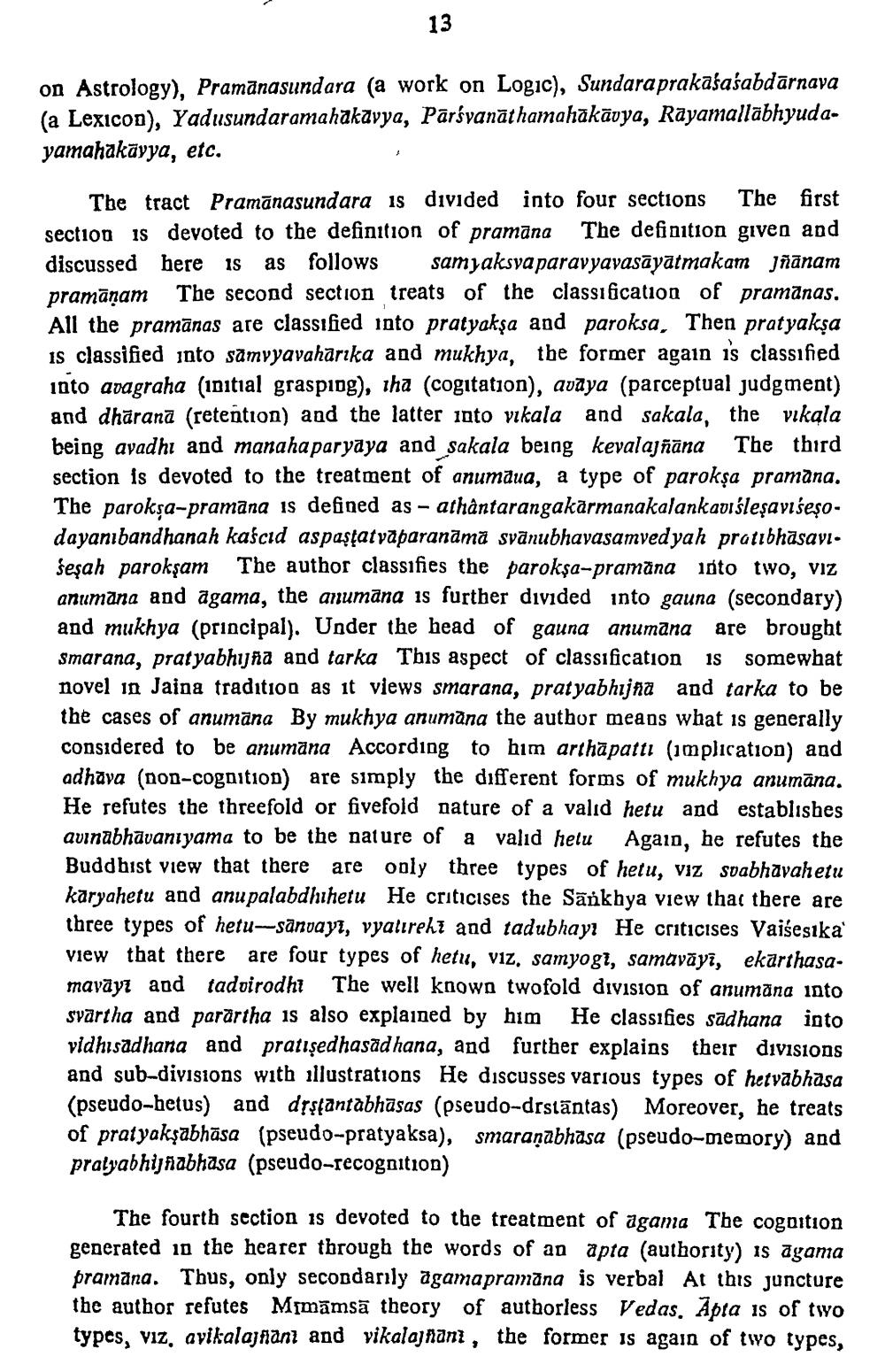________________
13
on Astrology), Pramānasundara (a work on Logic), Sundaraprakasasabdārnaya (a Lexicon), Yadusundaramahakävya, Pārsvanāthamahākävya, Rayamallabhyudayamahakayya, etc.
The tract Pramānasundara is divided into four sections The first section is devoted to the definition of pramāna The definition given and discussed here is as follows samyaksva paravyavasāyatmakam jñānam pramāņam The second section treats of the classification of pramanas. All the pramānas are classified into pratyakşa and paroksa, Then pratyakşa is classified into sāmvyavaharıka and mukhya, the former again is classified into avagraha (initial grasping), tha (cogitation), avaya (parceptual judgment) and dhārana (retention) and the latter into vikala and sakala, the vikala being avadhi and manaha paryāya and sakala being kevalajñāna The third section is devoted to the treatment of anumāua, a type of parokşa pramana. The parokşa-pramana is defined as - athântarangakarmanakalankadiśleşayısesodayanıbandhanah kaścid aspassatyaparanāmā svānubhavasamved yah pratibhasavi. šeşah parokşam The author classifies the parokşa-pramana into two, viz anumana and agama, the anumāna is further divided into gauna (secondary) and mukhya (principal). Under the head of gauna anumana are brought Smarana, pratyabhiña and tarka This aspect of classification is somewhat novel in Jaina tradition as it views smarana, pratyabhijna and tarka to be the cases of anumāna By mukhya anumana the author means what is generally considered to be anumana According to him arthapattı (implication) and adhava (non-cognition) are simply the different forms of mukhya anumāna. He refutes the threefold or fivefold nature of a valıd hetu and establishes avinabhāvanıyama to be the nature of a valid helu Again, he refutes the Buddhist view that there are only three types of hetu, Viz svabhavahetu karyaheru and anu palabdhihetu He criticises the Sänkhya view that there are three types of hetu-sanvayi, vyalırehi and tadubhayı He criticises Vaiśesika view that there are four types of hetu, viz. samyogi, samavāyi, ekarthasa. maväyı and tadvirodhi The well known twofold division of anumana into svärtha and parārtha is also explained by him He classifies sadhana into vidhisadhana and pratışedhasad hana, and further explains their divisions and sub-divisions with illustrations He discusses various types of hetvabhasa (pseudo-hetus) and drstantabhāsas (pseudo-drstāntas) Moreover, he treats of pratyakşabhäsa (pseudo-pratyaksa), smaraṇabhasa (pseudo-memory) and pratyabhijfiabhasa (pseudo-recognition)
The fourth section is devoted to the treatment of agama The cognition generated in the hearer through the words of an apta (authority) is agama pramana. Thus, only secondarily agamapramana is verbal At this juncture the author refutes Mmāmsā theory of authorless Vedas. Apta is of two types, viz, avikalajflani and vikalajnanı, the former is again of two types,




